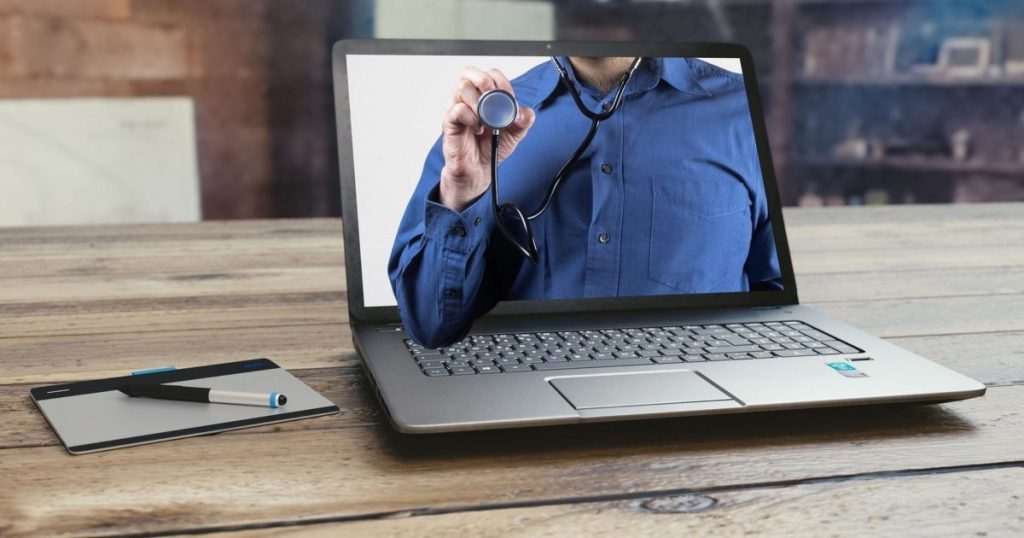The healthcare arena is swiftly changing, with telehealth emerging as a revolutionary influence. Telehealth, or telemedicine, has redefined how people access medical advice, diagnoses, and care. Among its many facets, asynchronous telehealth has gained attention for its unique approach to healthcare delivery. In this article, we will delve into the world of asynchronous telehealth, shedding light on what it is, how it works, its pros and cons, and how it differs from synchronous telehealth. Ultimately, we’ll explore which is the better option for your healthcare needs.
What is Asynchronous Telehealth?
Within the realm of telehealth, asynchronous telehealth is a segment that has been reshaping the manner in which patients engage with healthcare professionals. To understand it fully, let’s begin with a clear definition. Asynchronous telehealth is a mode of healthcare delivery in which communication and data exchange between patients and providers occur at different times, rather than in real-time. This approach allows for the “store and forward” of medical information, which is then reviewed and evaluated by healthcare professionals when convenient.
How Does it Work?
The process of asynchronous telehealth involves several key steps:
- Patient Data Submission – Patients initiate the process by sharing relevant health information, symptoms, or medical queries. This can be done through secure electronic messaging, sending images or videos, or transmitting medical documents and reports.
- Self-Guided Clinical Interview – Frequently, patients undertake a self-guided clinical interview by responding to a series of evolving questions concerning their symptoms and preferences. This self-assessment lays the groundwork for the ensuing procedures.
- Data Delivery to Healthcare Provider – The gathered information is delivered to the attending healthcare provider through a secured electronic health record (EHR) or telehealth platform. The data includes the patient’s medical history and interview responses.
- Provider’s Assessment – The healthcare provider reviews the transmitted data, analyzes the patient’s condition and formulates a recommended diagnosis and treatment plan. In some cases, this assessment may involve the use of specialized telehealth-enabled instruments, such as video otoscopes or electronic stethoscopes.
- Patient Care Plan – Subsequently, the healthcare provider delivers a care plan to the patient. This After Visit Summary is sent directly to the patient’s inbox, typically within a short timeframe, averaging around six minutes from the completion of the clinical interview.
What Are its Pros and Cons?
Asynchronous telehealth, also known as “store and forward,” offers several advantages and a few limitations:

Benefits
- Flexibility – Asynchronous telehealth provides patients with the flexibility to seek medical advice and treatment without scheduling constraints. This convenience holds special significance for individuals leading hectic lives.
- Efficiency – The process is highly efficient, often reducing the time required for patient intake and follow-up processes. Automated data gathering via online forms or remote devices typically consumes around three to five minutes, a notable contrast to the 30 minutes or longer often required in traditional synchronous appointments.
- Cost Savings – Patients can avoid the need to leave work early or make childcare arrangements, resulting in cost savings.
- Ongoing Evaluation – Asynchronous telehealth allows patients to work with their healthcare providers for the continuous monitoring of chronic conditions and treatment progress.
Drawbacks
- Lack of Real-Time Interaction – The absence of real-time interaction means that patients may not receive immediate answers to urgent health concerns. Asynchronous telehealth is best suited for non-urgent, low-acuity cases.
- Patient-Provider Relationship – While it offers convenience, it may lack the personal touch and connection of face-to-face interactions, which some patients value.
- Limited Applicability – Certain medical scenarios, such as emergencies or conditions requiring immediate intervention, may not be suitable for asynchronous telehealth.
How Does it Differ with Synchronous Telehealth?
To understand the significance of asynchronous telehealth, it’s essential to differentiate it from synchronous telehealth. These two approaches cater to different healthcare scenarios, and understanding their distinctions can help individuals make informed decisions about the type of care they require:
Synchronous Telehealth
Synchronous telehealth entails immediate, live interactions between patients and healthcare providers. This occurs through live video calls, audio-only calls, or secure text messaging. The defining characteristics of synchronous telehealth include:
- Immediate Interaction – In synchronous telehealth, patients and providers connect instantly, allowing for real-time discussions and assessments. This proves particularly beneficial during emergencies and circumstances demanding urgent medical care.
- Face-to-Face Analysis – Patients can expect an experience similar to an in-office visit. They undergo face-to-face analysis, examinations, and discussions with healthcare providers, just as they would during a traditional in-person appointment.
Asynchronous Telehealth
Asynchronous telehealth, on the other hand, takes a different approach to healthcare delivery. Instead of interactions happening simultaneously, asynchronous telehealth is based on communication and data exchange occurring at separate times. Here are the key features of asynchronous telehealth:
- Communication at Different Times – Asynchronous telehealth enables patients and providers to communicate at their convenience. Patients can submit their medical information or inquiries, and healthcare providers review and respond to them when it best suits their schedules.
- Non-Urgent, Low-Acuity Focus – This mode of telehealth is well-suited for non-urgent and low-acuity cases. It allows patients to seek healthcare on their terms, without the immediate pressure of a real-time consultation.
- Efficiency and Flexibility – While it may lack the immediacy and personal touch of synchronous telehealth, asynchronous telehealth compensates with efficiency and flexibility. It’s particularly beneficial for individuals with busy schedules, as it eliminates the need for rigid appointment timings.
Asynchronous vs Synchronous Telehealth – Which is Better?
The choice between asynchronous and synchronous telehealth is not a matter of one being inherently superior to the other; rather, they serve different purposes, each with its unique advantages. Evaluate the following situations to ascertain which method aligns more effectively with your healthcare requirements:
Synchronous Telehealth
- Acute Medical Issues – Synchronous telehealth shines in addressing acute medical issues and emergencies. When time is of the essence, immediate interactions with healthcare providers are essential.
- Conditions Requiring Immediate Attention – If your medical condition demands immediate evaluation, diagnosis, or treatment, synchronous telehealth ensures that healthcare providers can respond in real time, much like an in-person visit.
- Face-to-Face Engagement – For patients who prefer a healthcare experience akin to in-office visits, synchronous telehealth provides the closest approximation, allowing for face-to-face analysis, examinations, and personal discussions with providers.
Asynchronous Telehealth
- Non-Urgent, Low-Acuity Cases – Asynchronous telehealth is ideal for non-urgent and low-acuity cases. It empowers patients to access healthcare on their terms and is well-suited for ongoing care, consultations, or inquiries that do not require immediate attention.
- Flexibility and Efficiency – If you have a busy schedule or prefer to manage your healthcare on your timeline, asynchronous telehealth offers the flexibility to do so. It optimizes the healthcare procedure, conserving time and reducing interruptions to your everyday schedule.
- Cost Savings – By eliminating the need to adjust your schedule, leave work early, or arrange for childcare, asynchronous telehealth can result in cost savings for both patients and providers.
Understand What Asynchronous Telehealth Can Do
In conclusion, asynchronous telehealth, with its “store and forward” approach, is reshaping how patients access healthcare. It offers convenience and efficiency, allowing individuals to seek medical advice and treatment on their own terms. However, it is important to recognize that it may not be suitable for all healthcare scenarios, particularly those requiring immediate attention. By understanding the capabilities and limitations of asynchronous telehealth, patients and providers can make informed decisions about the most appropriate approach to healthcare delivery for their unique needs. As telehealth continues to evolve, both synchronous and asynchronous options will play vital roles in the healthcare landscape, ensuring accessible and efficient care for all.

